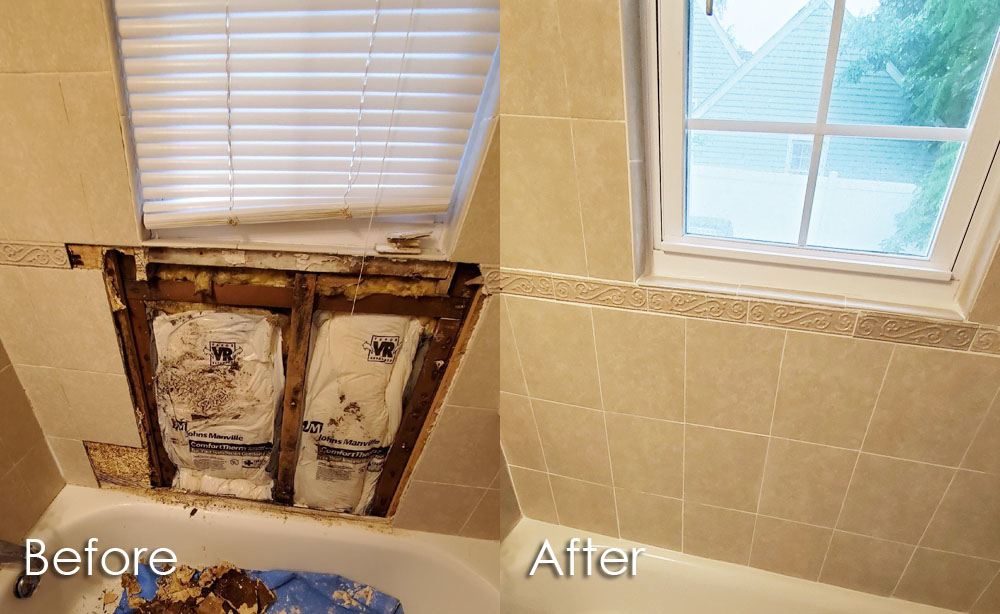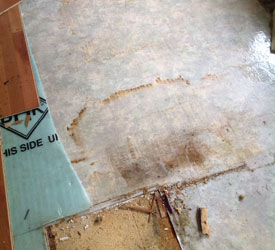Just how to Fix And Prevent Bathroom Water Damage
Just how to Fix And Prevent Bathroom Water Damage
Blog Article
Right here down the page you will find a lot of outstanding news around How to Prevent Bathroom Water Damage.

The restroom is extremely at risk for damp build-up and possible water damage as a result of the constant use of water in it. This article uses easy assessment techniques to aid discovering water damages dangers.
The frequent use water in the bathroom makes it exceptionally susceptible for wet build-up and possible water damage. By inspecting it consistently, you can decrease water relevant problems.
The following collection of evaluations is very easy to perform and also ought to be done as soon as in every three months in order to keep your shower room in good shape and also to prevent possible water damages brought on by the bathtub, the shower, pipeline joints and plumbing, sinks, cupboards, and the toilet
Do not disregard performing these assessments and also be thorough while performing them. Remember that these simple evaluations can conserve you a lot of money by supplying very early indications for water damage
Tub and also Shower
The shower as well as bath tub require unique attention as well as upkeep. Check the ceramic tiles and also replace if split. Make sure that there is no missing cement in between the ceramic tiles. Check and replace fractured caulking at joints where the walls satisfy the flooring or the bathtub. Blocked drains pipes and pipes issues will certainly avoid the tub from drying out and may show significant problems underneath the bath tub. Consult with a professional right away to avoid architectural damages. Take notice of discolorations or soft areas around the bathtub walls as they may suggest an interior leakage.
Plumbing
Signs for water damages are difficult to discover considering that the majority of pipelines are installed inside the walls.
Pay special interest to floor covering and also wall surfaces dampness and stains as they may suggest an unseen plumbing problem. Check moisture levels in adjoining spaces also.
Sinks and also Cabinets
Sinks and also closets are exposed to moisture and humidity daily and also are often forgotten. Evaluate consistently under the sink and also on the kitchen counter over it. Repair any drip in the trap as it may recommend drainpipe troubles. Browse the sink, slow-moving draining pipelines might show an obstructed drainpipe. Change sink seals if they are split or loosened.
The Bathroom
The bathroom is a prone water junction. Check the water lines and look for leakages around the commode seat, in the pipe, as well as under the water storage tank. If you discover any type of indications of moisture on the floor around the toilet, look for leakages in the toilet edge as well as storage tank seals.
Understand that hanging toilet bowl antiperspirants raises the opportunities for blockages.
How to Prevent Water Damage in Your Bathroom?
Water damage repair is an expensive, meticulous, and lengthy process. Unfortunately, bathrooms are the most susceptible rooms to water damage due to toilets, showers, and sinks. Pipes and fixtures wear out over time and are not immune to damage. But all is not lost, as there are ways to prevent water damage from occurring in your bathroom.
Check Your Plumbing
Nothing lasts forever, especially pipes, which can rust and begin leaking over time. You should periodically conduct pipe inspections and pay attention for any musty smells or water stains that may indicate you need water damage repair. Here are some things to check:
Frequently test valves for your toilet, shower, and sink to ensure they are properly working. Check faucet supply lines hidden under vanities and replace when needed. Replace cracked or deteriorating caulking along sinks, tubs, and showers. If you notice a clog in your sink, call in a professional. Since you can’t check the pipes in the wall, keep an eye out for stains, drywall bubbling, musty smells, and excess moisture; if the bathroom is on a second level, check the ceiling of the room directly below for these signs. Don’t Overwork Your Toilet
One of the most common reasons bathrooms need water damage repair is due to overflowing toilets. Save yourself the hassle of cleanup by being mindful and not pushing your toilet to extreme limits. If you have young children, it is especially important to keep an eye on them when they are in the bathroom and to teach them how to avoid clogging the toilet. Here are some more tips to help prevent your toilet from overflowing:
If you have a septic tank, only use septic-safe toilet paper Do not flush anything down the toilet besides toilet paper; items like diapers and sanitary napkins will clog the piping Pay attention to your toilet’s water level: If it’s low, it could mean it is partially clogged or that there is a crack in the toilet bowl Maintain Your Shower/Tub
Replace showers or tubs with cracks or other damage; even hairline cracks can allow water to seep in and cause damage. Grout and caulk help prevent water from seeping into walls and floors, so repair them if they are chipped, cracked, or deteriorating. Replace torn shower curtains or shower doors with seals that no longer work. Dry the floor and drain water from the tub immediately after use to prevent damage from sitting water. https://www.alure.com/home-improvements-blog/resources/how-to-prevent-water-damage-in-your-bathroom

As a keen person who reads on Common Causes of Water Damage in a Bathroom, I think sharing that editorial was a good thing. Do you know about anybody else who is very much interested in the subject? Please feel free to share it. Thanks a lot for your time. Please check up our site back soon.
Book A Service Report this page